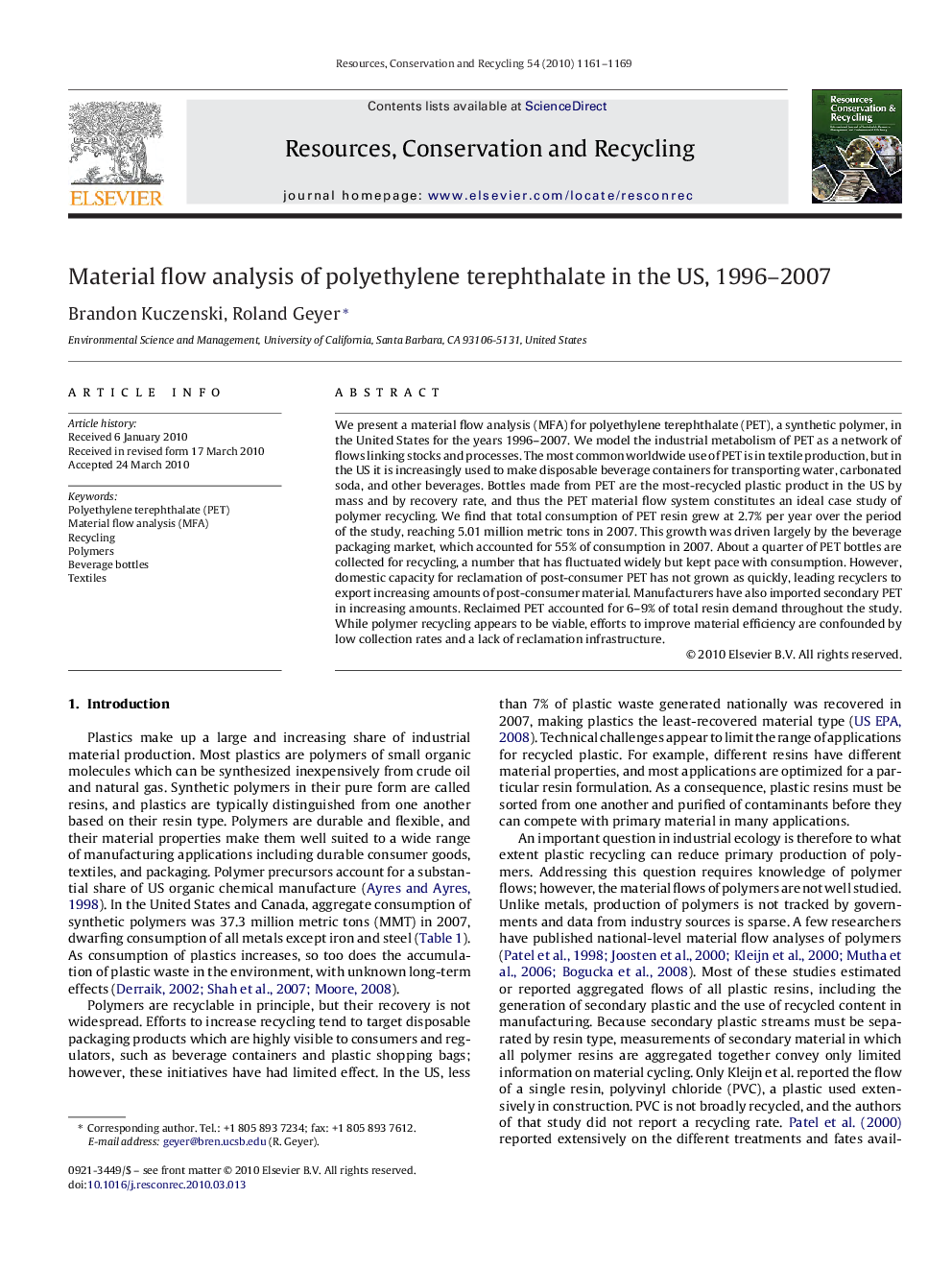| Article ID | Journal | Published Year | Pages | File Type |
|---|---|---|---|---|
| 1063803 | Resources, Conservation and Recycling | 2010 | 9 Pages |
We present a material flow analysis (MFA) for polyethylene terephthalate (PET), a synthetic polymer, in the United States for the years 1996–2007. We model the industrial metabolism of PET as a network of flows linking stocks and processes. The most common worldwide use of PET is in textile production, but in the US it is increasingly used to make disposable beverage containers for transporting water, carbonated soda, and other beverages. Bottles made from PET are the most-recycled plastic product in the US by mass and by recovery rate, and thus the PET material flow system constitutes an ideal case study of polymer recycling. We find that total consumption of PET resin grew at 2.7% per year over the period of the study, reaching 5.01 million metric tons in 2007. This growth was driven largely by the beverage packaging market, which accounted for 55% of consumption in 2007. About a quarter of PET bottles are collected for recycling, a number that has fluctuated widely but kept pace with consumption. However, domestic capacity for reclamation of post-consumer PET has not grown as quickly, leading recyclers to export increasing amounts of post-consumer material. Manufacturers have also imported secondary PET in increasing amounts. Reclaimed PET accounted for 6–9% of total resin demand throughout the study. While polymer recycling appears to be viable, efforts to improve material efficiency are confounded by low collection rates and a lack of reclamation infrastructure.
